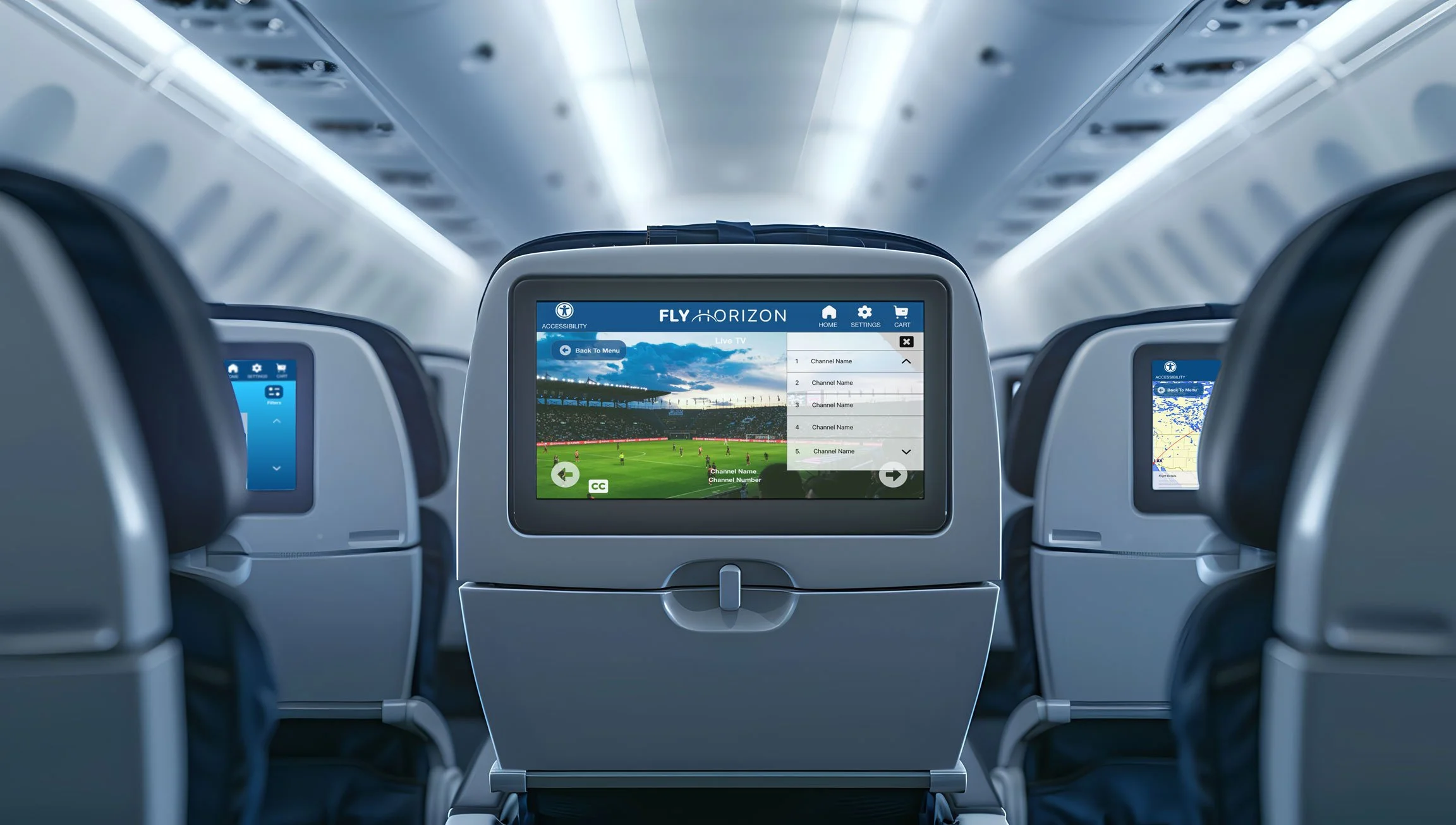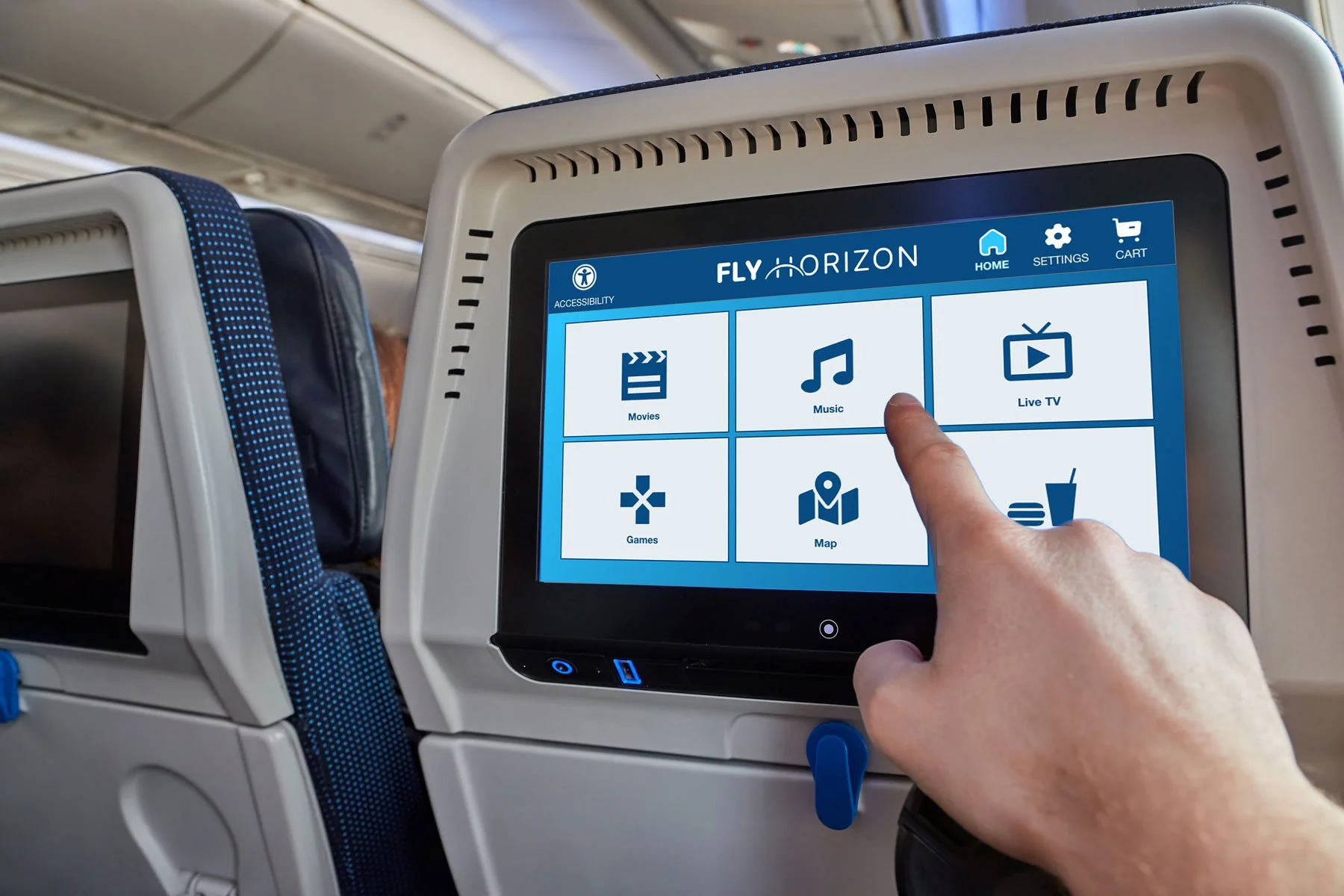Fly Horizon
Role
UX Design, UI Design, User Research
Fly Horizon is an Airline that wants to enhance their in-flight entertainment system’s user experience to provide intuitive, accessible, and user-friendly interactions, aligning with their brand image.
Brief
As the lead on this solo project, I was responsible for executing each phase of the UX design process, including developing user personas, mapping user journeys, creating high- and low-fidelity prototypes, conducting user testing, and refining the design through multiple iterations. Additionally, I designed the user interface, ensuring it was both intuitive for touch-screen navigation and fully compliant with accessibility standards.
Areas of Focus
Problem
The Fly Horizon in-flight system needed to be intuitive for a diverse group of people, from young to old, with a diverse set of user journeys. In addition to a need of an easy to use in-demand system as well, I needed every action up to payment to be done in 4 clicks or less.
Goals
Simplify navigation for different user groups (3-4 actions or less)
Incorporate a new in-demand function for ordering food, beverages, and snacks
Ensure accessibility for passenger’s with varying disabilities
Key Takeaways
Task Completion in Under 10 Seconds: Simplified user navigation enabled participants to complete tasks efficiently, achieving completion times of under 10 seconds.
Enhanced Accessibility: Improved contrast and strategic button placement made the interface more inclusive, significantly improving accessibility for all users.
Satisfaction Boost Through Added Features: The inclusion of features like dietary preferences, based on user feedback, enhanced overall satisfaction and engagement.
Outcomes & Impact
Clarity in Navigation: A well-structured navigation system is crucial for enhancing user experience, especially in complex environments like a flight.
Feedback-Driven Design: Continuous testing and feedback loops helped refine the design, ensuring it catered to a diverse range of user profiles.
Accessibility: Small tweaks, such as adjusting contrast and spacing, have a major impact on making interfaces accessible to a broader audience.



